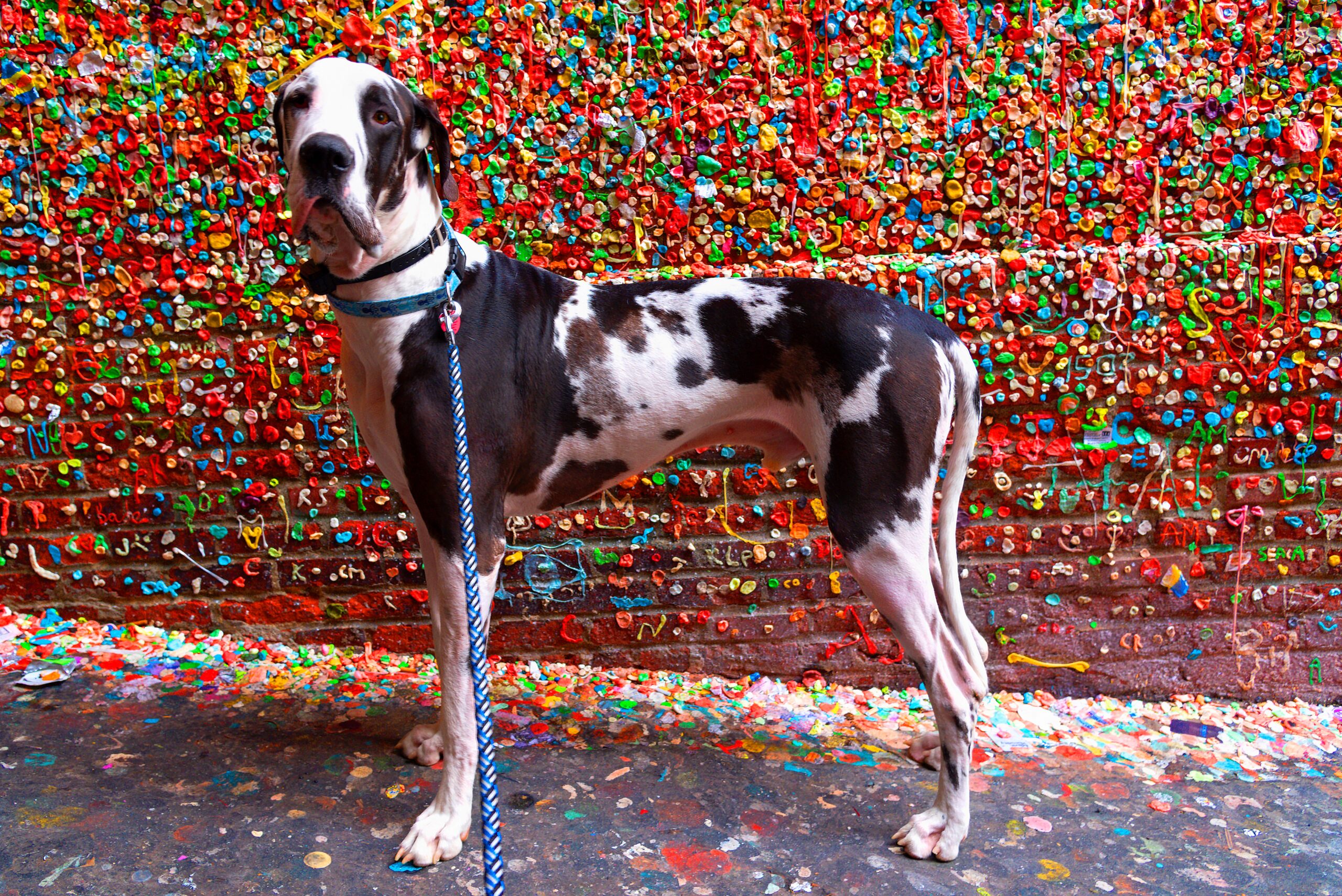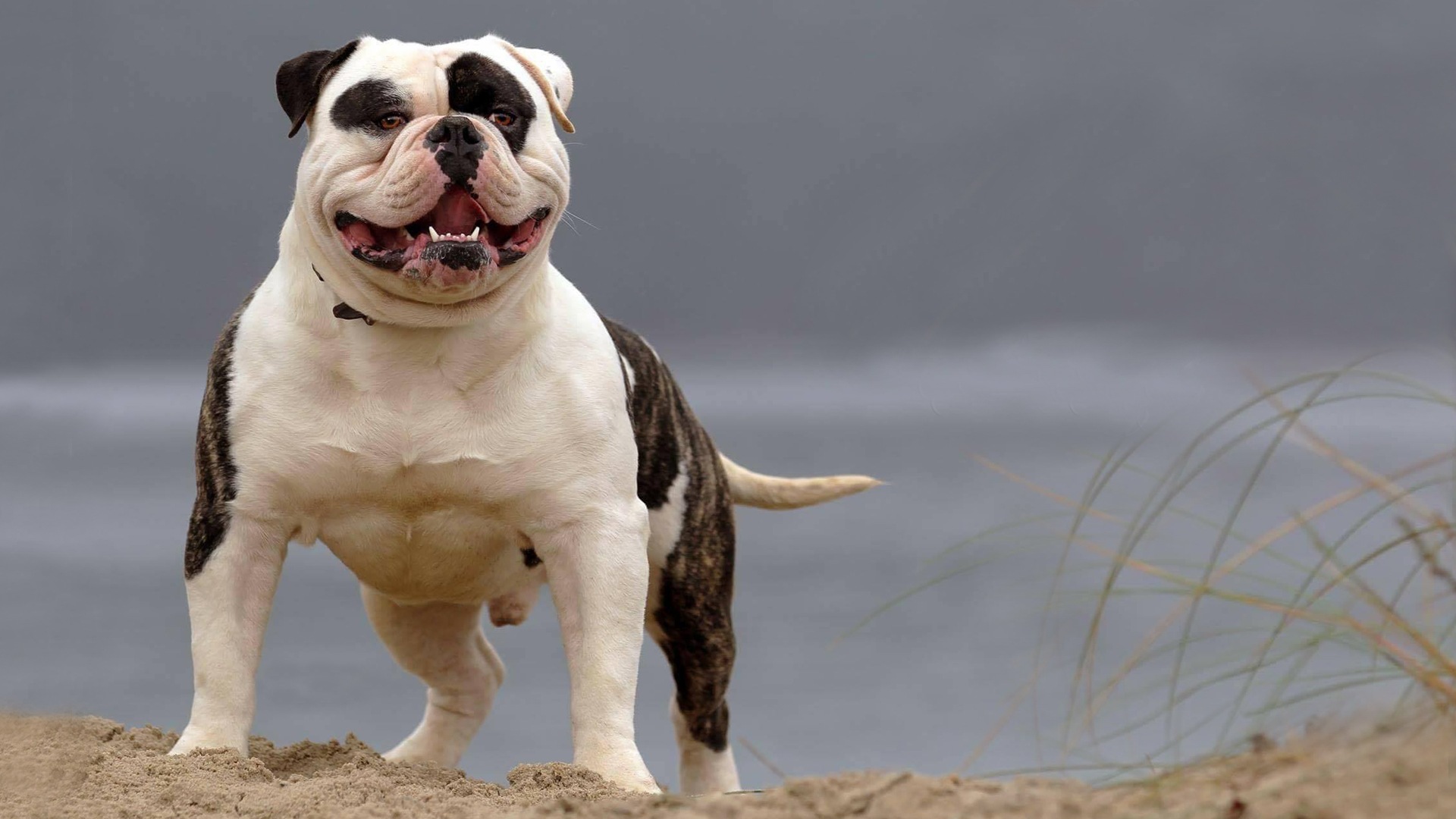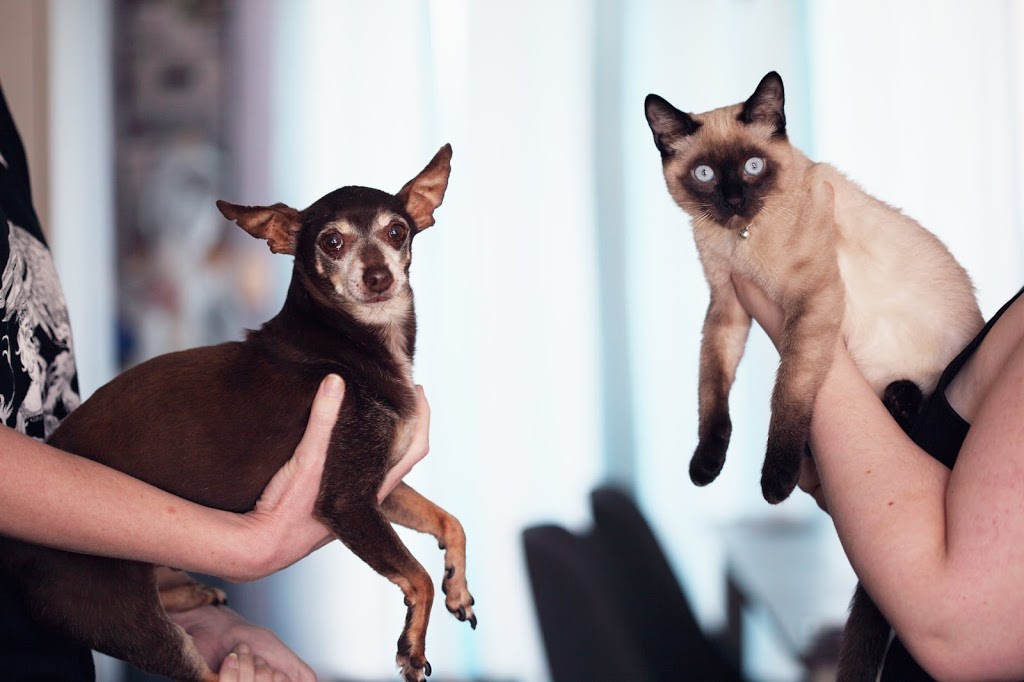The Great Dane, often referred to as the “Apollo of Dogs,” is a breed that captivates dog enthusiasts not only because of its imposing size but also due to its regal demeanor and gentle personality. Originating in Germany, this breed was initially developed for the purpose of hunting large game, such as wild boar, which necessitated a powerful and agile dog. Throughout centuries, the Great Dane has evolved from a formidable hunting companion into a beloved family pet, revered for its affectionate nature and loyalty.
Great Danes are distinguished by their impressive size and graceful appearance, embodying both strength and elegance. Despite their towering stature, they are known for their gentle disposition and sociable nature, making them ideal companions for families and individuals alike. While their protective instincts may cause them to be reserved with strangers, they are friendly and loving toward those they trust. Their remarkable loyalty and bond with their human companions highlight their essential role as canine family members.
Caring for a Great Dane requires ample attention and an environment that accommodates their size. They thrive in settings where they can share a deep bond with their owners and receive the exercise they need. With their history and characteristics, Great Danes remain one of the most remarkable breeds, captivating dog lovers worldwide.
Breed Characteristics
The Great Dane possesses a range of physical characteristics that make it a unique breed. Males typically stand between 30 to 34 inches at the shoulder and weigh between 140 to 175 pounds, while females are slightly smaller, standing 28 to 32 inches and weighing 110 to 145 pounds. This considerable size contributes to the breed’s regal appearance and commanding demeanor.
In terms of coat types, Great Danes have a short, sleek coat that comes in various colors and patterns. The most common coat colors include fawn, brindle, blue, black, and harlequin. Each color exhibits its own charm, but regardless of hue, these dogs are known for their shiny and smooth texture, which requires minimal grooming. It is imperative to ensure that the coat remains healthy and well-maintained to reflect the breed’s noble character.
The lifespan of a Great Dane generally ranges from 7 to 10 years, which is relatively short compared to smaller dog breeds. Factors influencing their life expectancy include genetics, overall health, and the quality of care provided. As giants of the canine world, Great Danes are predisposed to certain health issues, including hip dysplasia and heart conditions, which can impact their longevity. Therefore, regular veterinary check-ups and a well-balanced diet are essential in promoting a healthy life for these remarkable dogs.
In essence, the Great Dane’s striking size and unique characteristics contribute to its reputation as a beloved companion and a remarkable breed. The combination of size, color variations, and temperament makes them a standout among breeds, cementing their status as true companions in various households.
Temperament and Behavior
The Great Dane embodies a unique combination of strength and gentleness. These majestic canines are well-known for their affectionate nature, which makes them endearing companions for many families. Despite their towering stature, Great Danes tend to exhibit a gentle disposition, earning them the nickname of “gentle giants.” Their temperament is characterized by a calm and friendly demeanor, making them highly suitable as family pets.
Great Danes are particularly known for their loyalty and love towards their human companions. They thrive on social interaction and are eager to please, which can foster strong bonds with both adults and children. Their friendly nature allows them to get along well with various family members, including kids. In fact, many families find that Great Danes are extraordinarily patient and tolerant of youthful exuberance, often serving as both playmates and guardians.
In summary, the Great Dane’s temperament is one of its most cherished attributes. Their affectionate and friendly behavior, combined with the need for responsible handling and socialization, makes them a beloved addition to families across the globe. As the Apollo of dogs, they not only bring joy to their human companions but also embody the essence of loving and gentle giants.
History of the Great Dane
The Great Dane has a rich and storied history that can be traced back to ancient times. Originally bred in Germany, this magnificent breed was developed from a lineage of large mastiff-type dogs. The purpose of breeding these dogs was primarily for hunting purposes, particularly for tracking and hunting wild boar, which required both strength and agility. Their formidable size allowed them to confront and subdue such large prey, proving their prowess in the field.
Throughout the centuries, the Great Dane’s role began to evolve from a hunting dog to a more versatile companion. By the 16th and 17th centuries, these dogs were not only admired for their impressive stature but also for their noble appearance. They were often depicted in artwork, showcasing their grandeur and elegance. As they became well-established in German nobility, their association with elite households further solidified their status as the Apollo of dogs. Notably, some historical figures, including royalty, owned Great Danes, further enhancing the breed’s allure and prominence.
The breed’s development was significantly influenced by crossbreeding with various dog types, including the Irish Wolfhound and the English Mastiff. This resulted in a more refined physique and a temperament suitable for living alongside humans. In the late 19th century, the Great Dane was officially recognized as a distinct breed, with breed standards established by kennel clubs. These early breeding practices helped standardize the breed’s size, color, and overall appearance, leading to the modern Great Dane we see today.
Today, Great Danes are beloved as gentle giants and family companions, often forming deep bonds with their human counterparts. Their historical journey from formidable hunters to cherished pets is a testament to their adaptability and enduring appeal. Famous Great Danes, such as Scooby-Doo, have further popularized the breed, solidifying their place in popular culture and the hearts of dog enthusiasts worldwide.

Care Requirements for Great Danes
Caring for a Great Dane involves several essential requirements that focus on maintaining the dog’s health and well-being. Given their large size, Great Danes require regular exercise to support their muscular structure and good cardiovascular health. Daily walks of at least 30 minutes, along with playtime that engages their minds and bodies, are crucial. However, care must be taken to avoid excessive exercise during their growth stages to prevent joint issues, a common concern in large breeds.
Grooming routines for Great Danes are relatively straightforward, as their short coat is low maintenance. Regular brushing, approximately once a week, helps minimize shedding and keeps their coat healthy. Bathing should be done as needed, keeping in mind that overbathing can strip away necessary oils from their skin. This breed is also prone to certain health issues, so maintaining dental hygiene through regular brushing and providing appropriate chew toys is essential in preventing dental problems.
Training protocols for Great Danes should begin early, as their size can be intimidating if not properly managed. Positive reinforcement methods work best, ensuring a bond of trust and respect develops between the dog and owner. Socialization from a young age is equally important to help them become well-adjusted adults. Due to their affectionate nature, they often thrive on companionship and benefit from being around families or individuals who can dedicate time to their social needs.
Lastly, dietary considerations are vital for Great Danes. They require high-quality, large-breed puppy or adult dog food that helps to support their growth rate and overall health. Nutritional needs vary by age and activity level, so consulting a veterinarian for a tailored feeding plan is recommended to avoid obesity, which can contribute to significant health issues in this breed.
Common Health Concerns
The Great Dane is a majestic breed known for its impressive stature and gentle disposition. However, like many large breeds, Great Danes are prone to several health issues that owners should be aware of. According to AKC one of the most critical concerns is gastric dilatation-volvulus (commonly known as bloat). This serious condition occurs when the dog’s stomach fills with gas and twists, potentially leading to shock and death if not treated promptly. Owners can help mitigate this risk by feeding their Great Dane smaller, more frequent meals and avoiding vigorous exercise immediately after eating.
Another significant health issue in Great Danes is hip dysplasia, a genetic condition where the hip joint fails to fit properly into the hip socket, leading to arthritis and mobility issues. Regular veterinary check-ups, maintaining a healthy weight, and following an appropriate exercise regimen can be effective strategies for prevention and management.
Additionally, dilated cardiomyopathy (DCM) is a serious condition that affects the heart’s ability to pump blood effectively. This condition is common in Great Danes and can be hereditary, so selecting a reputable breeder who screens for genetic disorders is essential. Routine veterinary exams can help catch early signs of heart problems, allowing for timely intervention.
Wobbler syndrome, characterized by a neurological condition that impairs coordination and balance, is another concern for Great Danes. This can often necessitate medical management or surgical intervention. Lastly, happy tail syndrome occurs when the dog’s tail repeatedly strikes hard surfaces, leading to injury. Protective measures, such as limiting access to hard objects, can help in these cases.
Being informed and proactive about these common health issues will contribute to a healthier, happier life for your great dane. Regular veterinary check-ups, proper nutrition, and tailored exercise routines are vital in managing and preventing these conditions effectively.
Adoption and Costs
Adopting a Great Dane is a decision that entails significant financial consideration. The initial cost of acquiring a Great Dane puppy can vary widely, typically ranging from $600 to $3,000, depending on factors such as the breeder’s reputation, the puppy’s lineage, and geographic location. Potential owners should expect to invest in a reputable breeder who conducts health screenings, thus ensuring the puppy has a good genetic foundation.
However, the financial commitment does not end with the purchase of a puppy. Owning a Great Dane is a long-term investment that requires budgeting for various ongoing expenses. Daily food costs can be particularly noteworthy, as these giants can consume anywhere from 4 to 10 cups of high-quality dog food per day, potentially totaling $100 to $300 monthly. Furthermore, as they are prone to specific health issues, regular veterinary care is essential. Annual check-ups, vaccinations, and preventive medications contribute to the overall expense, averaging between $500 to $1,000 yearly.
In addition to food and routine care, owners should consider the costs associated with larger necessities. For example, Great Danes require more substantial and durable supplies, such as beds that accommodate their size and collars that withstand their strength. Emergency vet visits and potential surgical interventions can also be costly, sometimes exceeding thousands of dollars, depending on the severity of health issues that may arise.
Given the unique requirements and potential expenses involved in caring for a Great Dane, prospective owners should ensure they are fully prepared for the long-term commitment this majestic breed necessitates. Planning ahead can help mitigate financial strain and ensure that both the owner and the Apollo of dogs enjoy a fulfilling and healthy companionship.

The Joy of Owning a Great Dane
Owning a Great Dane brings an unparalleled joy that many dog enthusiasts cherish. These majestic animals have a unique way of forming bonds that enrich the lives of their owners, making them not just pets, but integral family members. For many, the experience of having a Great Dane is filled with heartwarming anecdotes that highlight their affectionate nature and delightful quirks.
Many Great Dane owners recall their initial hesitation upon considering a breed known for its size. However, those concerns quickly faded as they witnessed the affectionate and playful personality of their Great Dane unfold. One owner shared a touching story about their Great Dane, who would lay gently on their children’s laps, instinctively protecting them while showering them with affection. The owner noted that their children have developed a unique bond with the dog, expressing that the Great Dane has taught them empathy and responsibility.
Additionally, Great Danes have a natural tendency to be social, often becoming the life of the party during family gatherings or neighborhood events. Another owner mentioned how their Great Dane, with its friendly disposition, would greet visitors with a wagging tail and a playful bark, instantly making everyone feel welcome. The joy experienced during these interactions demonstrates the vitality that these dogs bring to family life. Their playful antics, combined with their graceful presence, often lead to laughter and shared memories that last a lifetime.
In essence, owning a Great Dane entails a profound companionship that transcends the traditional pet-owner relationship. The love and loyalty exhibited by these majestic dogs foster emotional ties that contribute positively to family dynamics, creating an environment filled with joy, laughter, and lasting friendships. For those fortunate enough to share their lives with a Great Dane, the rewards are bountiful, making every moment spent together truly special.
Conclusion
The Great Dane, often called the Apollo of dogs, combines a gentle temperament, regal stature, and affectionate demeanor. As one of the largest dog breeds, their impressive size pairs with an amiable personality, making them ideal companions for families and individuals alike. Their kind nature and loyalty forge strong bonds with their owners, proving these gentle giants offer far more than just their physical presence.
Prospective owners must understand the Great Dane’s care needs, as their large size demands special attention to diet, exercise, and health maintenance. Regular veterinary visits and a balanced diet ensure their well-being, while proactive management of common health issues, such as bloat and hip dysplasia, is crucial. Providing ample space for exercise and socialization helps them develop into well-mannered companions.
Bringing a Great Dane into your home requires a commitment to their care and happiness. These noble dogs thrive on human interaction and need regular companionship to avoid loneliness or behavioral challenges. Their gentle nature suits families with children, though supervised interactions ensure safety. Owning a Great Dane is a fulfilling experience, bringing joy, love, and valuable lessons in responsibility, patience, and devotion. With their remarkable qualities, Great Danes are a breed worth considering for any dog lover.






